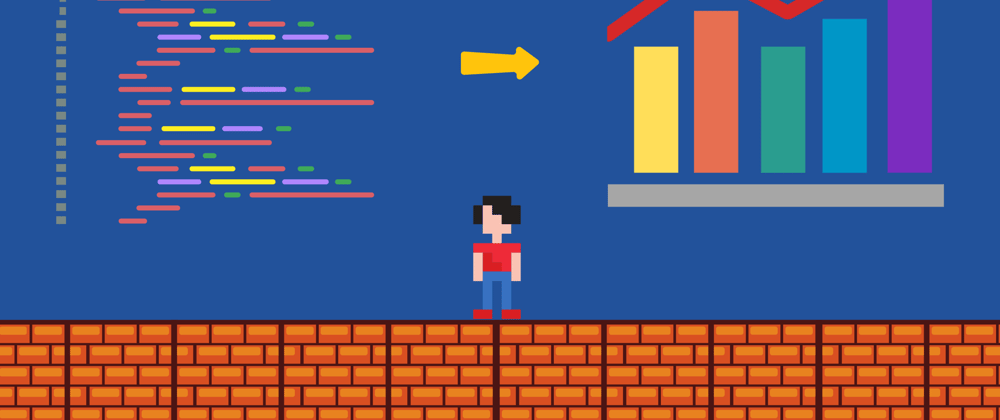Most pet projects remain unknown, without users, without an audience, and bring no benefit to the creator except unfulfilled hopes and the expenditure of personal time on weekends and evenings. The main reason is the need for more marketing and product promotion. I experimented on myself and my product. For four weeks, I focused on promoting the product, and I want to share the results.
Introduction
I had a plan to promote my product in four weeks, taking it from practically nothing to being published on ProductHunt (PH). The idea was to quickly create the simplest MVP of the product, abandon programming, stop endlessly “polishing the code” in my project, develop and add features that users supposedly need, constantly improve something, and instead focus on marketing and promotion.
I followed my plan for four weeks and want to share the promotion results and my thoughts. I’ll talk about the process of launching on PH, share the results in numbers and visuals, and discuss my conclusions and what can be improved in the promotion process.
What was the plan?
Let me remind you of my plan to provide context:
- First Week: Write and publish two daily articles on various news platforms. Share short posts about each article on social media. Respond to comments.
- Second Week: Monetize the product. Publish the first week’s results as a separate article on resources and social media.
- Third Week: Prepare for the launch on PH and related platforms. Prepare a comprehensive document containing all necessary media documents, texts, and translations into English. Collect and review contacts of acquaintances and people from the digital community.
- Fourth Week: Launch on PH. Actively publish articles and posts everywhere about the PH launch. From the launch until the end of the voting, engage in social media, predominantly on X (Twitter), and draw users’ attention to the launch. It is one of the most challenging days, as it requires staying awake for more than 24 hours — the duration of the voting for Products of the Day.
You can review the complete plan here.
What goals were set at the very beginning?
Quote from the article with a four-week plan.
Nothing terrible will happen if, in the end, the results are not comforting. We will gain invaluable experience and a systematic approach that can be repeated repeatedly. We will have the skeleton of a system and a process onto which we can later build muscle mass. We will understand our mistakes as users provide feedback and share their opinions.
It won’t be that we’ll get 0 users; the minimum we’ll get is 1000 new beta testers and users. Is spending a month on hard work for such experience and learning worth it? I think it’s worth it.
Choosing a Product for Promotion
For the launch, I’ve selected a straightforward and user-friendly product. It’s a Telegram bot that allows you to track your domains and keep an eye on any other domains. The bot sends a notification on Telegram a few days before the domain registration expiration date.
The process of promotion and launch
To be honest, as a developer, it was a significant challenge for me. Every day, I experienced fatigue, discomfort, and difficulties. I had to exert much effort and push myself to do what I needed according to the plan, specifically marketing and promotion.
Resistance
My mind resisted at every step. I longed to return to my comfortable environment — writing code, enjoying the development process, engaging in technical tasks, planning additional features, or checking logs and fixing errors.
In essence, doing all the unnecessary things that, as it seemed to me, would advance my product. After all, it would be so awesome that everyone would want to share it. This is the essence of the plan — to shift the mindset from development to promotion, to think about marketing and advertising, to develop a habit, and to learn something new.
Every day, I had to do the following:
- Write articles and posts for social media.
- Respond to comments and questions.
- Tell and come up with stories about my product.
- Think about how to present my product to the audience and users.
- Explore new resources and platforms.
- Read posts, articles, and books on marketing and promotion.
Additional motivation
I understood that, in a way, it’s like training — the brain doesn’t want to work and expend energy on it; it wants to rest and engage in familiar activities. Recognizing this, I sometimes resorted to tricks and temporary motivation. I read posts and stories of entrepreneurs on X or IndieHackers. It worked well.
In this process, you start finding useful articles and meeting new, interesting people who share their experiences. You read their posts and marvel at how strong these people are. How effortlessly they launch their projects, and you’re amazed by profits ranging from $12,000 to $100,000 per month on their projects. This motivates and provides resources to move forward through discomfort and moral pain.
Myths and Launch on Product Hunt
I’ve read all possible guides and articles I found online about launching on PH.
They say you need to:
- Prepare for launch for 3 to 6 months. It seems like a manifestation of a common ailment among novice startup founders called procrastination. Spending half a year compiling documents, deceiving ourselves that we are doing something useful that will promote our product. In the end, the vector will shift to something else after a month, and we won’t launch.
- Launch with the help of a launcher. A launcher is a well-known and authoritative startup founder or entrepreneur with massive followers. While it might help when you have many followers on PH. I decided to launch on my own.
- Launch only on Tuesdays. Tuesday usually sees increased activity on PH. People browsing new products may be more active and ready to engage. I launched on a Monday and on holiday, and yes, I got less coverage than projects on other days, but the competition was also lower.
- Collect contacts from several hundred people and message each privately on launch day for support. I think when people read such guides, they immediately panic and abandon the idea of launching on PH. I decided to reach out to only 50 close people I communicate with. For others, I encouraged support on LinkedIn and X.
- X algorithms work well with post-reach. Once you publish a post with keywords and hashtags, people interested in it see your post in their feed and start interacting with it. So, on launch day, I decided to spend 24 hours on X, interacting with users, monitoring new posts, and commenting to draw attention to my profile, posts, and PH launch. Then, I asked people to support me on PH, which worked well. People were interested in the product; I got feedback from users.
- Post on all related and similar platforms. It’s better to focus on getting into the Top 3 of the voting. After that, other related platforms will automatically add you to their catalogs.
The launch results
The process is ongoing, and every day, all the metrics mentioned above grow. It works like a snowball, continuing to roll and get bigger. At the very beginning, it was challenging to start from scratch — there were no resources, no community or followers on social media, no understanding of how it works, and no understanding of the crucial role that community plays in launching a project.
What conclusions did he draw?
After a month of active work on product promotion, following the plan, I achieved a 50% increase in new users compared to the total number acquired in a year.
I was very disappointed in myself because I spent a year working on technical debt and programming features instead of focusing on marketing and product promotion. I can’t even imagine what results could be achieved by dedicating a whole year to marketing, not just one month.
I re-evaluated my approach and plan to allocate about 20% of my time to development, dedicating the rest to marketing, networking, boosting social media, and building sales.
Most importantly, I conducted this marketing campaign with a zero budget.
Subscribe to my newsletter. Let’s grow together.
Good luck!















Top comments (0)